


 238
Reconstructing the
238
Reconstructing the
Johannine Community I

Ephesus, John the Apostle, and the
New Covenant Assemblies of Yahweh
Second Expanded Edition, 16 April 2024


John Unlike All Others
There is something rather odd about John - something rather special. Something different. Whether you are a Scriptorian, a theologian or a devoted student of the writings of this apostle, you will have noticed that he writes rather differently to the other apostles. This difference has been picked up by serious students of Scripture and made them wonder - why does he tell his story in such a unique and engaging way? This has elicited a great deal of comment. You see, John does not read like the other apostles and because of this it took the post-apostolic Messianic Community (Church) a while to accept his writings. Why this suspicion? What lies behind the mystery of the Johannine writings - the Gospel, the three Epistles and the Apocalypse? We are about to undertake a journey which I hope will go some way in answering these questions.
Underlying Gospel Similarities
John's Gospel differs from the Synoptics (Matthew, Mark and Luke) in almost every way - in style, chronology, locality, subject-matter, and the way Yah'shua (Jesus) Himself is presented. But lest we should be tempted to think that John is a completely different species of apostle, teaching an alternative Besorah (Gospel), it must at the outset be clearly stated that there is an underlying similarity with the Synoptics of both an historical and theological nature.
John Contrasted With Other New Testament Writers
Another way to approach John is N.T.Wright's which is a comparitive one:
"With Paul were are in the seminary room: arguing things out, looking up references, taking notes, and then being pushed out into the world to preach the gospel to the nations. Matthew takes us into the synagogue, where the people of God (Elohim) are learning to recognize Jesus (Yah'shua) as their king, their Emmanuel. Mark writes a short tract, challenging his readers with the very idea oif a crucified king and turning it into a handbook on discipleship for followers of the servant-king. Luke addresses the educated Greek world of his day and paints a big picture of God's (Elohim's) purposes through Israel's Messiah for the whole world. John, by contrast, takes us up the mountain, and says quietly: 'Look - from here, on a clear day, you can see for ever" [1].
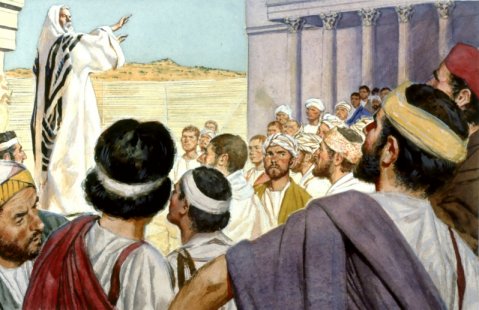 An aged John preaching at Ephesus
An aged John preaching at Ephesus
An Entirely Different Presentation of the Same Gospel
In spite of the different flavour, the Gospel of John teaches the same saving truth as the other Evangelists. The Besorah (Gospel) - the Good News about Christ - is exactly the same message but it is presented in a rather different way: the synoptic writers take one incident at a time and interpret each in its own light, whereas John takes each incident and interprets it in the light of the total significance of Yah'shua (Jesus) - in terms of the whole picture. If the synoptics represent a linear interpretation of Yah'shua (Jesus) based on a series of events, John represents a three dimensional one - like a cube (which is a picture of the Holy of Holies and the New Jerusalem) or like the sphere of the earth, if you like - upon which the revelation of each of the individual events impinge like a light beacon from outer space. John wished his readers to see the total significance of the ministry of Yah'shua (Jesus) and used incidents in His life to illustrate it whereas the other three writers use the individual incidents as singular revelations leading to a cumulative one. So John starts with the whole and illuminates it from different angles whereas Matthew, Mark and Luke take each individual event and add each event to the previous one until the whole comes into view. It's the same revelation but a different approach. John, you might say, takes the 'holistic' approach - but in order to do that, you have to have the whole revelation in sharp focus right from the start.
 John stands back and gives us the eternal perspective
John stands back and gives us the eternal perspective
A Different Calling
Understanding this difference is vital to an understanding of John himself and his spirituality. Most of us learn in a linear, cumulative fashion, but by the time John is writing he is already an older man and is therefore able to 'see' the whole from the perspective of a whole life already lived. Remember, the Synoptists (Matthew, Mark and Luke) were much younger when they wrote their gospels. But John's understanding doesn't necessarily come about just because he had an accumulated knowledge. It was more like Yahweh deposited the whole picture in his mind and heart right at the start which he then unpacked for us to see. Then he simply moved around the whole highlighting the contours and textures from different angles. And because John, as a prophet, seer and revelator, experiences and conveys the Message differently from all the other writers, so, as you might expect, his calling is a little different from the other apostles, even the remaining two of the inner circle or Patriarchate - Peter and James. It's because of this difference that Yah'shua (Jesus) called John the "beloved talmid (disciple)" because the apostle 'knew' His Master in a special way, and vice versa.
A Deep Personal Relationship
John had a deep spiritual relationship with Christ. John is an extraordinary character and you will remember that it was to John that Yah'shua (Jesus) entrusted the care of his mother at the foot of the cross. It was this talmid (disciple) who sat at the place of honour next to Yah'shua (Jesus) at the Last Supper and it was this talmid (disciple) who was the youngest of all the other apostles, racing ahead of Peter to the empty tomb with the boundless energy of youth. He reminds me a lot of the patriarch Joseph whom Yahweh depicts as a messianic figure in Genesis. But there is a reason John and Joseph are 'different' from the others too and it has to do with their ability to see into the heart of a matter and to make deep, intimate connections. They know and see things instantly that others take time to know and see. And that's what makes them leaders of men.
Ideas About Apostolic Succession and Authority
Now in Catholic tradition Peter is placed at the permanent head of the earthly Messianic Community (Church) and that is done, in large part, to make a legalistic claim to special authority, because as you know the Catholic Church makes a big fuss over leadership succession, like the Mormons. It is occupied with legal authority more than with truth. This idea, which has evolved into a trenchant tradition, that Peter is the first link in a chain of authority, has been inherited by the older traditions of Protestantism too (like Lutheranism and Anglicanism) but has been applied in a slightly different way to Catholicism. It has been accepted in a modified form. And whilst it is perfectly true that our Saviour made Peter the head of the apostles for as long as he was alive, it was for the primary pupose of showing how men are to be grafted into the vine that is Messiah - through obtaining a personal revelation the way Peter did as to who Yah'shua (Jesus) is - the Messiah, the Son of the Living Elohim (God), and then making a declaration of faith: "Thou art the Christ, the Son of the living Elohim (God)" (Mt.16:16, KJV) though John also, and uniquely, places these same words into the mouth of a woman, Martha (Jn.11:27). That is the ground on which all true believers (men and women alike) stand in terms of a sequence of revelations that cumulatively lead to a full revelation - the way Peter was shown at Caesarea Philippi and the way Martha was shown in her intimate relationship with Messiah, more about which I shall speak next week. Your average Christian or Messianic comes to faith and grows in that faith in this manner. Not so with John. He eventually succeeded to this exalted position as chief apostle but not ahead of, or before, Peter and James - that's why he is listed as the third of the Inner Circle - of Peter, James and John.
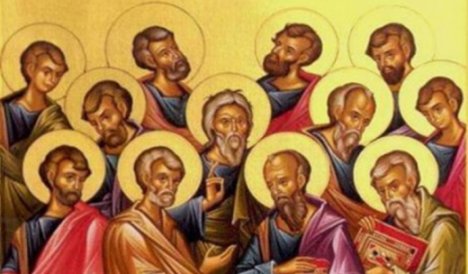 Apostolic authority is a matter truth rather than ordination lineage
Apostolic authority is a matter truth rather than ordination lineage
Faith Without Works is Dead
Now you need to pay careful attention to what I am saying here, to the order in which headship of the Messianic Community was transmitted, because the Peter-James-John sequence is teaching something everyone of us must understand. If Peter (generally speaking) represents emunah (faith) and your typical Evangelical Protestant, which he does - that dogged, passionate, loyal trust in Messiah...and you all know what kind of a man Peter was - then James (generally speaking) represents (as is born out by his teaching in the one book we have penned by him) that same faith that must always be followed up by works or deeds. What did James emphasise in his teaching? If you could summarise James' teaching in one sentence, what would it be? "Faith without works is dead" (Jas.2:20,26, NKJV). In other words, James was your typical Messianic, reminding Evangelicals that, yes, faith is the starting point, but you can't leave it at that - your faith is useless unless it is accompanied by Torah-obedience. That's what James represents.
Elohim is Love
And then there is John. If you were to summarise John in one sentence or one scripture verse, what might that be? I know what I would choose and I think most would agree with me because its tenor suffuses his whole writing:
If anyone acknowledges that Yah'shua (Jesus) is the Son of Elohim (God), Elohim (God) lives in him and he in Elohim (God). And so we know and rely on the love Elohim (God) has for us. Elohim (God) is love. Whoever lives in love lives in Elohim (God), and Elohim (God) in him" (1 John 4:15, NIV).
Three Apostles Depicting The Three Chief Gospel Principles
These three leading apostles, then (generally speaking), are a picture of the whole Gospel:
- 1. Faith/trusting Christ (Peter - also Paul);
- 2. Obedience to Yahweh's Torah-commandments (James); and
- 3. Love (John)
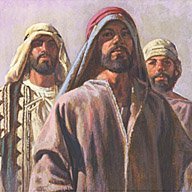 The apostolic inner circle
The apostolic inner circle
The Three are One
Love does not replace obedience, and obedience does not replace faith. They are all one or echad. The infant trusts its parents, becomes a youth and learns obedience (the same way Christ did - Heb.5:8), and by the by comes to fully love as an adult. Faith contains obedience and love, just as obedience contains love - they have to, for each to be authentic. Because to separate these in any way is to render them untenable and therefore unauthentic, like organs separated from the body with the expectation that they will survive on their own and somehow provide wholeness. You can't claim to love whilst being disobedient and failing to trust. You cannot divide them from one another. But neither are they a kind of co-equal 'trinity' - they're not the same as each other, and they can only manifest in sequence. You cannot expect a baby to selflessly love. You cannot command it not to poop in its nappy or diaper - you cannot expect that kind of obedience from one so young. It can't do these things. It must first grow into a little trusting ego with self-identity and learn obedience before it can love in the adult way.
Priesthood Principles
This is why there is always a Presiding Patriarchate representing the principles symbolised by the three senior apostles, Peter, James and John. The John-principle is the end goal, the apex, but it is not reached without Peter and James. Are you understanding what I am saying here because this is very important. John is at the end of a sequence because he represents the end or goal but he is not 'reached' without the disciplining of James or the child-like dependency of Peter. Those who try to separate these three or arrange them differently always end up twisting and perverting the gospel. These are actually the three divisions of the Melchizedek Priesthood too - the Deaconate (Zadokian), the Eldership (Enochian) and the Patriarchate, with their female counterparts. They are what constitute a complete persson as represented in the iconic Venn diagram of three interlocking circles which I created to describe what a whole Christian/Messianic should look like with Peter (and Paul) representing the evangelical man, James the messianic man, and John the compassionate, loving man of wisdom...the 'freedom' part of the Gospel so abused by Evangelics who interpret it to be the freedom to be lawless. We shall perhaps talk more about what this 'freedom' is another time because it has nothing to do with modern secular notions.
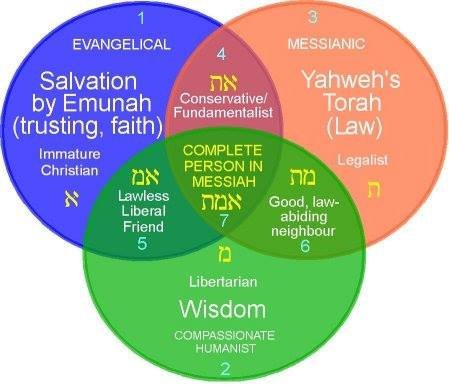 A true disciple is threefold in his being
A true disciple is threefold in his being
The Tavnith Made Clear
Peter is the alef, alpha, or beginning, representing the Pesach (Passover) festival. James is the mem or mid-point represented by the feast of Shavu'ot (Weeks/'Pentecost'). And John is the taw, omega, end, representing the Sukkot (Tabernacles) festival. Do you see the pattern? The Divine Tavnith? They are the infant, youth and adult phases of the Gospel life - of spiritual maturation in Christ. If you can grasp this threefold truth, and apply it, you have understood what we Messianic Evangelicals are all about. You will see this pattern everywhere and in everything because Father is its author. You will see it in singleness/celibacy (represented by Peter), in simple monogamous marriage (represented by James) and in complex plural marriage (represented by John) [2]. Why plural? Because maturity is the spiritual mastery of all the basic principles of life functioning in unison in an echad (uniplural) relationship with others in community. There is a divine process involved, and the end of that divine process is what John the Apostle represents, the fruit of an overcoming life in Messiah Yah'shua (Christ Jesus).
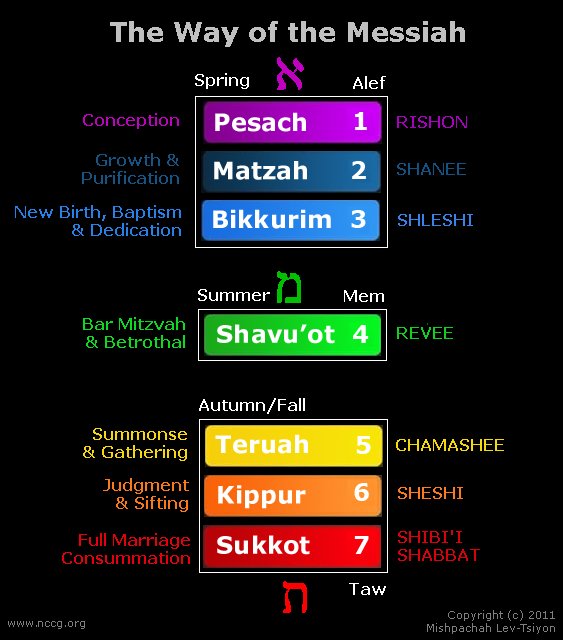 The divine tavnith or pattern showing the Way of the Messiah
The divine tavnith or pattern showing the Way of the Messiah
All Present and in the Correct Order
What John is, and what we are all called to be, cannot be obtained all at once but comes in maturation stages. There is a development or metamorphosis involved, starting with the New Birth and reaching to a full sanctification and consummation representes symbolically in the Book of Revelation as the Marriage Supper of the Lamb (Rev.19:9). It's not instantaneous as many Protestant denominations falsely teach. We are not made perfect without making an effort to overcome in and through the power of Christ, like the acquisition and development of any skill. Even a child protigé like Mozart had to hone or perfect his musical gift so that his early music was qualitatively different from his later work. John did not ascend to primacy until Peter and James had served out their 'presidency' as it were, making sure that evangelical Christian-type faith was fully in place and not skipped (as in legalistic perversions of the Gospel), and Torah-obedience was in place as the natural outflowing from the regenerated, born-again heart (as Jeremiah prophesied). These two must preceed, and are indeed the evidence of, genuine Christ-like love. Love is present from the moment of the New Birth but it must be matured too. We start as newborn children, are trained to be servants and are finally elevated to the exalted status of the friends and companions of Messiah (Jn.15:15). These are what the Three Pilgrim Festivals of Passover, Weeks ('Pentecost') and Tabernacles represent. All must be present, and in the correct order. Obviously the interaction between these is more complex in practice - I am forced by time constraints to make generalisations in order to make all this more comprehensible so that you can have an overview.
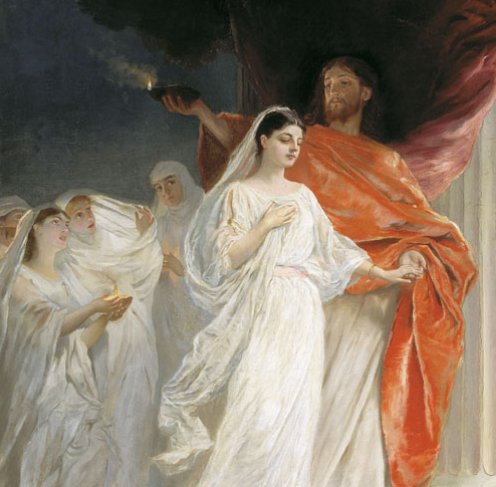 The marriage supper of the Lamb is the climax of the growth process
The marriage supper of the Lamb is the climax of the growth process
John Had to Grow as Love Must Grow
John did not ascend to his position of leadership and pre-eminence all at once. He, like us all, had to learn obedience as a son or daughter. He had to grow. People who claim to 'love' but who are lawless or who lack the kind of trusting faith that comes from genuine spiritual regeneration (the 'new birth' or being 'born again'), always generate false, counterfeit love, from the narcissistic to the psychopathic. Love without faith in Christ and obedience to His mitzvot (commandments) - which are Father Yahweh's eternal mitzvot (commandments) (in other words, those who claim that all you need the New Testament and not the the Old Testament are trying to take a shortcut and enter the Kingdom by another gate - Jn.10:1), is fake love - cheap love, cheap grace - insincere love, unstable love - in short, not real love at all, but a confusing mixture of the carnal and spiritual. Christ calls such 'thieves' and 'robbers'. Love lies at the very centre and heart of the Gospel but is is not matured without true faith in Christ and obedience to Yahweh's commandments as represented in another of our iconic diagrams:
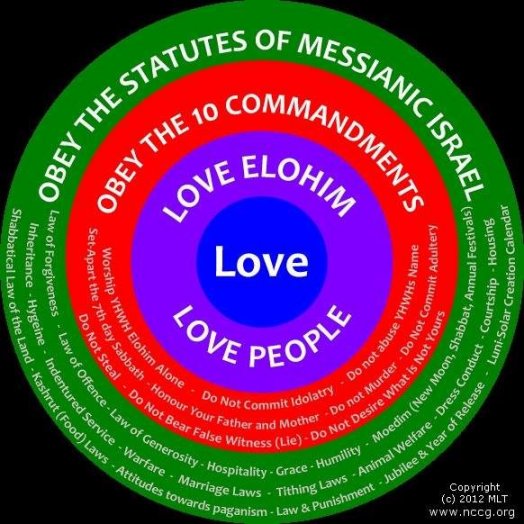
Why 2,000 Years of Christendom Were Needed
If John had been called before his time, he would have failed, just as many who call themselves to, and so flop in, their ministries. They soon reveal themselves to be presumptuous and consequently vacuous and hollow, leading Paul to write:
"See to it that no one takes you captive through hollow and deceptive philosophy, which depends on human tradition and the basic principles of this world rather than on Christ" (Col.2:8, NIV).
The Messianic Community (Church) is not birthed fully mature and adult. It must grow because it is a living organism. And it has needed 2,000 years to do so. What we are called to do could never have been done before now - not a century ago, not a millennium ago. We are at the end of a long and painful process of very slow learning indeed, because man is slow to learn, and because of his fallen, carnal nature, is spontaneously rebellious. And he has done a mighty lot of rebelling over 2,000 years, experimenting with this man-made variation of the Gospel and then that one, failing every time - perhaps enjoying brief success because of a genuine restored principle here and there but then collapsing because the message was not complete or whole - it was lacking in something. The confusion that has resulted from 32,000 plus denominations is the fruit of that rebelliousness, a testimony to sin - of man's failure to trust, obey and sacrificially love.
 The confusion that is the denominations
The confusion that is the denominations
A Prophet, Seer and Revelator of the Highest Order
Whatever John's special mission was it was distinguished in many ways as shown by the accounts which have survived in the Messianic Scriptures (New Testament). He was without a shadow of a doubt a navi (prophet) of great stature, much like the Tanakh (Old Testament) greats Samuel, Elijah, Isaiah, Ezekiel, Jeremiah and Daniel, as the fruit of his labour, Book of Revelation, attests. This is what you would expect of a final witness - with everything in place, everything there. The Book of Revelation is all about the end-time Judgment - judgment on man's failure to trust, obey and love and the usshering in of the New Resurrection World.
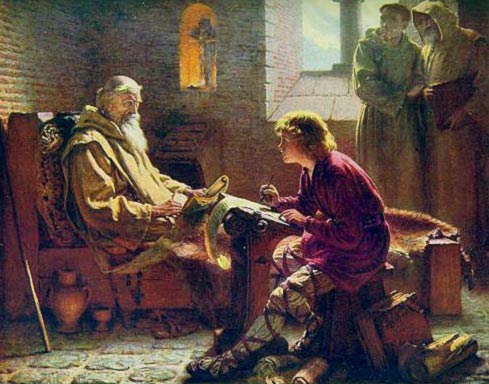 John was a great prophet, seer and revelator
John was a great prophet, seer and revelator
Patmos & the Link Between the Apostolic and Sub-Apostolic Eras
There is a reason why John was set-apart by Father Yahweh to be the sole member of the Twelve to escape martyrdom (though his enemies tried to murder him more than once - tradition has it they tried to boil him alive in oil) and he died at a ripe old age. He alone was exiled (on the isle of Patmos) and it was during this time of isolation, not dissimilar to that of John the Baptist living in the wilderness, that he was shown in vision the end times that make up the Book of Revelation or Apocalypse. It was John, moreover, who was the vital link between the New Testament Apostolic and the post-New Testament Sub-Apostolic or Episcopalian [3] Assemblies (Churches), to whose home in Ephesus the divines of the latter period like Polycarp came to seek spiritual council, tuition and guidance. He is a man who in many ways is clouded in mystery, as we are already seeing, to whom a special custodianship was given symbolised by the mother of Yah'shua (Jesus) Himself.
Johannine Mystique
This mystique is to be reflected throughout his writings which, after Paul, dominate the New Testament. Though he came to live in Asia Minor amongst the Ephesian Gentiles, in the City of the Seven Sleepers, his mission was not chiefly one to the Gentiles per se (though of course he witnessed to them and raised assemblies in their midst as as Messianic Evangelicals join with Evangelical Christians in preaching the simple gospel of faith), the responsibility for that falling chiefly to Paul while he was yet alive, whose dominating influence on the modern Church is chiefly owed to the shere volume of his New Testament epistles.
A Revelator of the Highest Calibre
John is above all a revelator, again of the highest calibre and his greatness, when compared to Peter, Paul, James and the others who hold prominence in the New Testament, is to be found in areas substantially different from theirs who were great in their own ways too.
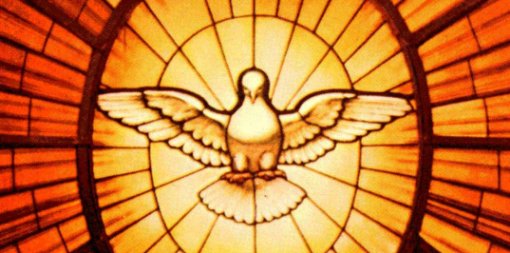 As a revelator, John was unrivaled in his day
As a revelator, John was unrivaled in his day
Evangelicals, Messianics & Messianic Evangelicals
If the locus of the Evangelical Protestant spirit is Peter-Paul, and if the locus of the Messianic spirit is James and/or the writer of Hebrews, then it would be true to say that that of the Messianic Evangelical is John: which is not by any means to exclude Paul or to denigrate either him or the Protestantism that has adopted him as their chief 'witness'. Rather, it is to lay claim to a vantage point, to an understanding and a spirit somewhat different from them, whilst holding to the same Saviour and aiming at the same salvific goal. Until this has been realised, the mission and work of this ministry is likely to be misunderstood by outsiders seeking to find out who we are. Having said that, please let everyone be clear: we are for Paul's teachings 100 per cent - there is no conflict between us and Paul, nor do we believe, as some misguided souls teach, that the Gospel of Yahshua (Jesus) and 'Paulism' are somehow two irreconcilable and antagonistic systems of thought. We are for Paul and, we believe, Paul is for us. But Paul's mission was not identical to John's - they overlapped but were not the same; his was to bring the Gentiles to Messiah and graft them into the Vinetree of Israel (Rom.11) whereas John's was essentially to those who were already of Israel whether by literal descent or adoption through evangelism. John built upon Paul. Many of the congregations John inherited in Asia Minor had been founded by Paul.
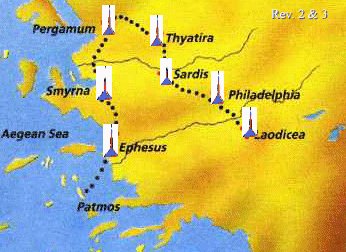 The seven congregations of Asia Minor in John's circuit
The seven congregations of Asia Minor in John's circuit
Why Ephesus?
In the beginning John was much with Peter. He also served in the Apostles' Council at Jerusalem at which James presided, as was to be expected since they were the triumvirate that governed the Messianic Community (Church) (Gal.2:9), but later there seems to be greater distance between the three owed in large part to geography as they did not enjoy the kind of instant communications that we take for granted today. Unlike Paul, whose extensive travels are well known and meticulously recorded, John's area of operation centred latterly around Ephesus, one of the seven assemblies (churches) (the first one, in fact) addressed in the Book of Revelation (Rev.2:1-7). So what was so important about Ephesus that John made this his base of operations? And is there any significant spiritual meaning behind the use by the Chief Apostle of this city?
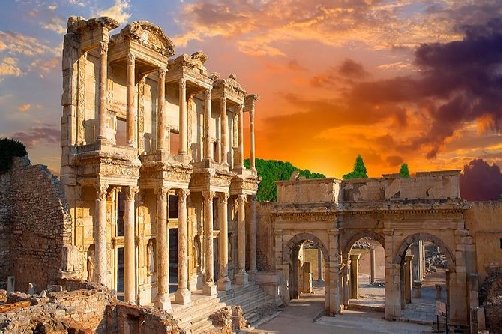 Ruins of the ancient city of Ephesus in modern day Turkey (Türkiye)
Ruins of the ancient city of Ephesus in modern day Turkey (Türkiye)
Between Ephesus and Rome
By the time Paul first visited the city around AD 57 (Ac.19) it was an important commercial centre of the Roman Empire, and under Augustus became the first city of the Roman province of Asia. Tradition has it that Ephesus was the last home of the mother of Yah'shua (Jesus) which, given John's custodianship of her, is certainly most likely. Tradition also has it that Luke died there (though this is less likely in my view). But clues as to the apostolic importance of this city are mostly to be found in the Book of Revelation itself where apparently Ephesus, as a Metropolitan or Mother Assembly (a bit like Mishpachah Lev-Tsiyon in NCAY), heads up the other six Asian local assemblies of Smyrna, Pergamum, Thyatira, Sardis, Philadelphia and Laodicea. Though the Metropolitan Assembly at Rome was later to assume a prominence based on the city being the capital of Empire, the evidence seems to suggest that the Assemblies of Yahweh (Churches of God) had essentially two loci - one at Jerusalem headed by James (and its Bishop, according to Clement of Alexandria) until his martrydom in AD 62 (by the dating of Hegesippus), and the other at Ephesus headed by John. If John, as Messianic Evangelicals claim, was the head of the whole Messianic Community (Church), and more especially the head of the Apostles after the death of James, then some sort of evidence for this ought to be found in the prophecy to the city where the illustrious apostle was based. Moreover, once James had been martryred, we would expect this city to head any list of important apostolic centres.
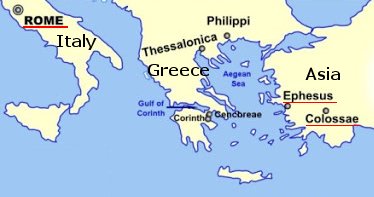
Where False Apostles Were Exposed
And so we find, in Revelation, chapter 2, that it was just this - at the head. Moreover, it was a centre for the exposing of false apostles:
"I know your works, your toil and your patient endurance, and how you cannot bear evil men but have tested those who call themselves apostles but are not, and found them to be false" (Rev.2:2, RSV).
The Priestly Government of the Holy Order
Discerning and Exposing false apostles, prophets and teachers has most definitely been something that Messianic Evangelical ministers of the New Covenant Assemblies of Yahweh (NCAY) have been called upon to do many times over the years since there are thousands (principally Pentecostals) who claim to be 'apostles', both men and women. Today this has evolved, and will evolve, into the Holy Order or Chavurat Bekorot which is the priestly govenment of NCAY as a whole.
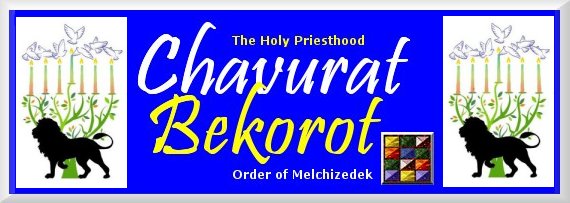
Sexual Immorality & a Loss of Messiah-Focus
Those early Ephesians suffered much and admirably demonstrated the quality of patience required of a people being persecuted for their emunah (faith) (Rev.2:3). They also stood firmly against the kind of sexual immorality being advocated by an apostate sect or breakoff of the Messianic Community (Church) called the Nicolaitans (Rev.2:6) whose immoral and idolatrous practices were likely akin to those of Balaam (Rev.2:14,16). Sexual immorality is perhaps the defining thing of our age and is something Yahweh hates passionately. He is most particular about clean sexuality and marriage because these are essential to holiness. But perhaps because of the problems they were facing, and the responsibility of governing the whole Messianic Community (Church), the Ephesian qodeshim (saints, set-apart ones) were suffering the same sort of problem that all ecclesiastical centres have suffered over time - a loss of Messiah-focus:
Return to Your First Love
Those early Messianic Ephesians had lost their spiritual cutting-edge, that pure Messiah-like ahavah (love) that stems from leading the fight against the flesh and all that is false and having a deep, living relationship with Father Yahweh. The Saviour admonished:
"Remember from what you have fallen, repent and do the works you did at first" (Rev.2:5).
 Return to your first love
Return to your first love
A Loss of Zeal
For whatever reason - persecution, exhaustion, etc. - they were not as zealous in their good works as they had been at the beginning, perhaps occasioned by John being removed from them while he was in exile on the island of Patmos. Neutralise the Shepherd and the sheep often go their own way and scatter. John, their leader not only locally but of the whole Messianic Community (Church) by the end of the first century - the last of the apostles - was imprisoned on a volcanic island in the Greek Dodecanese and it must have seemed to the Assembly at Ephesus that the last of the apostolic testators was about to be taken from them permanently. As it happens, his exile only lasted some months - perhaps a year at most - and he returned to live out his last days amongst the Ephesian talmidim (disciples). And so they were exhorted:
"To him who conquers I will grant to eat of the Tree of Chayim (Life), which is in the paradise of Elohim (God)" (v.7).
They too had their weakness, struggle and overcoming to accomplish. We're no different.
The 'Sabbath' Colony
We have always taught in this work that the seven assemblies (churches) of Asia were not just a representation of the seven broad categories of communal 'spirit' that are to be found in Christendom in the last days but of the trials every Christian Church and Messianic Assembly aspiring to the fullness must work through. Each Church/Assembly-spirit has attached to it a promise connected with overcoming or conquering of a weakness - a particular tendency to sin. And though the Ephesians had their own particular weakness at the time, it is fitting that they should head the list as the primary colony of seven, the number of completion and of spiritual perfection. Ephesus was, as it were, the "Sabbath Assembly" or colony, the other six corresponding to the six days of the week with their labours and particular problems - persecution (Smyrna), sexual immorality and false prophecy (Pergamum), feminism and sexual immorality (Thyatira), spiritual atrophy (Sardis), legalism (Philadelphia), and lukewarmness (Laodicea). One of the purposes of the Holy Order is to constantly alert our members to these problems and to encourage them in their spiritual battles.
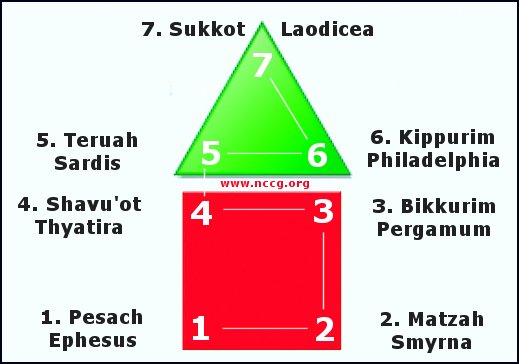 The 7 assemblies of Asia Minor & the 7 annual festivals
The 7 assemblies of Asia Minor & the 7 annual festivals
The same Salvation Messages from Two Different Angles
Both this moral ideal and this ordered unity are on the one hand given and received, and on the other hand they are objects of intense striving and overcoming.
Between Order and Grace
So here we have the significance of Ephesus - it is a symbol of the very work of the Assembly of Yahweh (Church of God) itself, for it represents ahavah (love) in perfect, balanced union with order/discipline (discipleship) and emunah (faith). This lies at the heart of the Messianic Community (Christian Church), its life essence, so often nullified by abandonment of one or the other, and which historically, and in a general sense, has resulted in the schism of Catholicism (a highly ordered tradition) and Protestantism (which has always stressed grace and ahavah/love). Rome has thus come to represent order while the other Protestant centres represent grace (undeserved loving-kindness), with each lacking the positive qualities of the other. 'Catholic Peter', as it were, stands facing 'Protestant Paul' but both have forgotten who is actually in charge.
Christian Capitals
Catholic Rome and and the various centres of Protestantism (from Wittenberg in Germany and Geneva in Switzerland to Westminister in England and Nashville, Tennessee in the USA) have played essential rôles in the history of Christianity but neither are its capital. The capital will one day be the New Jerusalem, to which we must all spiritually return. But before that day (which will not occur until Messiah returns) we must seek our spiritual roots in the 'Ephesus' of John. It is here that the Messianic Community (Christian Church) in exile from the old Jerusalem is to be found. Not the modern-day Ephesus, an archaelogical ruin in modern-day Turkey (Türkiye) near the village of Seljuq, but the Ephesus of the apostle John, and its modern-day Messianic-Evangelical spiritual restoration.

Our Long Journey
Messianic Evangelicals (or New Covenant Christians as we're also called) have been on a long spiritual journey, beginning as it were in 'Catholic Rome' in 1986/7, passing through 'Protestant Westminister' in 1992, and finally returning home to 'Johannine Ephesus' in 1996 and thus to mission of the Apostle John. We are primarily (though not exclusively) a Johannine Community (Church) with a different tradition to other Christian and Messianic bodies. Here there is, and will be, a Holy Order called the Chavurat Bekorot, an apostolic seat where the order and discipline of the Community (Church) is, and will be, maintained. And when the Final Gathering gets underway during this the Last Exodus and the purification of the Priesthood has been completed, the cloud by day and the pillar of fire by night will once more return and be seen as a witness that Zion is once more restored and on the move back to the Promised Land (Is.4:5-6).
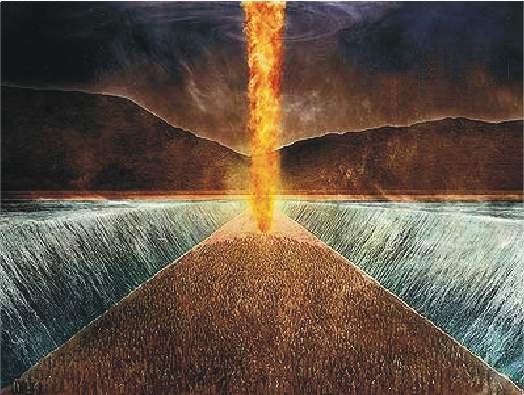
Conclusion
Over the next few weeks we shall be developping this theme further. Some of the material is going to challenge you (see our Hot Potatoes). People will react differently based on their traditions as Yahweh's truth is retored back to the earth. One metaphor for the coming Kingdom that recurs again and again in Scripture, that lies at the very heart of the Johannine understanding, is that of holy echad marriage. In some ways that is the 'pillar of fire'. The Second Coming is repeatedly likened to a reunion of the Bridegroom with His Bride. If you love the Master Yah'shua (Jesus) with all your heart, and desire to submit to Him in all things, and if you are consistently drawn to this work, then you are most assuredly called to be a pioneer wherever it is you happen to be, using whatever skills you may have. Commit yourself to getting involved. If you would like some help, get in touch with me and we can discuss what you can do from starting a small Bible-and-Prayer group to evangelism. So until next week, Yahweh bless you all as you draw ever closer to Him in love, truth and obedience, through His Son Yah'shua (Jesus), is my prayer. Amen.
Continued in Part 2
Endnotes
[1] N.T.Wright & Michael F. Bird, The New Testament in Its World: An Introduction to the History, Literature, and the Theology of the First Christians (SPCK & Zondervan Academic, London: 2019), p.648
[2] We are not here saying that Peter, James and John were literally single, monogamous and polygamous, respectively. We know Peter was married (because mention of his mother-in-law is made, traditionally named as Glaphys - Mt.8:14-15 - and claimed by Clement of Alexandria to have been executed for her faith by the Roman authorities) and deduce that Paul must have been too (because he could not have been a Pharisee as a single man) and that's about all. We are talking here about principles only.
[3] Led by bishops as opposed to apostles. A bishop was a kind of metropolitan supra-pastor (a reason Greek Orthodox bishops are called metropoles) responsible for not just one but several congregations in a particular area and was usually based in a city. The highest office in episcopalian churches (like the Anglicans) is officially (but not in practice) that of the bishop though they have created an extra layer covering a wider area consisting of many metropolitan districts. Thus the Anglican Church in England has two Archbishops, one in York and one in Canterbury with the latter assuming yet another rank as overall head archbishop. Thanks to Henry VIII, who created the Anglican Church in order to secure an ungodly divorce, the Monarch is head over even the Archbishop of Canterbury. Thus many new 'layers of authority' have been added over time. In the Catholic system, cardinals and a Pope have been added. The Episcopalian system was set up by John as a stop-gap measure until the end times and the restoration of apostles and a patriarchate could be expedited once a Remnant has started to gather.



 V463
V463

This page was created on 6 November 1999
Last updated on 17 April 2024
Copyright © 1987-2024 NCAY - All Rights Reserved




